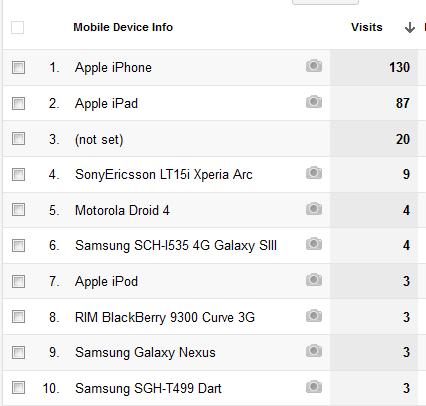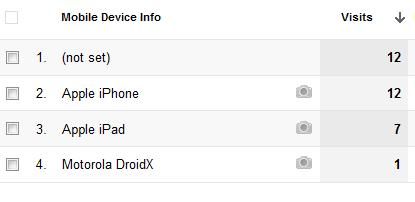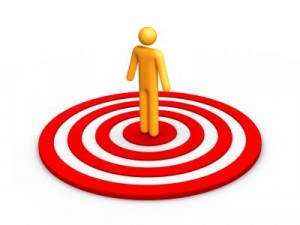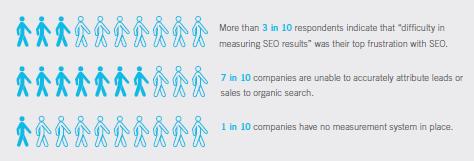Increasing Your B2B Sales Volume and Revenue – What’s Changed?

Selling No Longer Works This Way!
This is the first blog in a four part series that talks about how to increase b2b sales volume, including the radical shift in B2B sales and the changes you can start to make to your to B2B lead generation and B2B demand generation tactics, and B2B sales tactics to set a course that can more than double your volume and revenue growth over the coming 18 months.
The series will discuss what has caused the shift in B2B sales (as a hint buyers don’t buy the way the used to), how this change in volume and revenue impacts your business and why you may need to change your approach , why marketers are more important than ever in your sales process and how you can turn this knowledge into a significant B2B sales and B2B lead generation advantage in 2013 to shift your approach to get it right.
And there is no doubt that you need to get it right because according to a recent study by Adam Needles companies that have embraced selling to the buyer the way they want to buy have seen an increase in revenue of 157% over the past 2 years. Companies that continue to sell “old school” (banging the phone, blindly running campaigns, and relying on solely on tradeshows and the occasional webcast) have seen stagnant sales while simultaneously experiencing an increase in what it costs to sell. Double downside vs double upside.
The good news is that, according to Forrester Research, we are still only at 10% market adoption of companies that have totally nailed the new paradigm, so you can turn your competitors ignorance into your gain. The even better news for Small Businesses is that according to the same study it takes a Fortune 2000 competitor 18 months and twice the costs to turn around their culture because of the fiefdoms and resistance inherent in larger organizations.
What’s Changed
So what’s changed? Unless you have had your head in the sand you know that its tougher to get your buyer on the phone (our connect ratios – someone picking up the phone on the other end when you dial has dropped from 18%-21% to 6%-11% over the past 2 years). And we all know that the sales cycle has increased volume and revenue by about 1.5X to 2X (that’s months, quarters or even a calendar year depending on your sales cycle. It’s not rocket science to figure out that the buyer and not the seller now controls the sales process. That simple fact is the one thing you need to keep top of mind throughout this series.
Buyers are More Risk Adverse
It’s not 2006 anymore. The stock market bounces up and down daily. Experimental budgets have been cut. There are both real and imagined geo-political and domestic issues that get exacerbated and hyped by a 24 hour news cycle. There is a great deal more that is perceived to be out of our control so if you have a budget you do control folks are now much tighter with it. Buyers want to be smarter and more cautious before they buy.
There are more people involved in the buying process
Since 2009 there are more people involved in the buying process (confirming the point above there is safety in making “group” decisions). According to a Marketing Sherpa Study there are typically three people involved in transactions of 25K to 100K and four to eight people involved in a deal over 100K. And, according to the Harvard Business Review 90% Buying decisions now require both a technical decision maker and business decision maker in the final decision. All this requires your team to educate and sell to more people with different needs. In a nutshell companies are staggeringly more risk adverse and being much more diligent in their decision making process.
Software as a Service, Telco and Apple (among others) are turning B2B sales experience into a consumer sales experience for everyone
SaaS companies have done a great job turning a B2B sale in a “consumer” purchase experience. You come into the website, find the product you are looking for, research it and then in some cases just plug in your credit card. Buyers can in most cases never even speak with a sale rep unless you ‘the buyer’ feel the need to reach out to speak to a sale rep. This coupled with the fact that buyers can now make larger consumer purchases like smart phones, computers, and even cars by doing their own research and placing an order has made them even more comfortable buying without a sales rep. Consider how you purchase your home media now. I personally have bundled phone, internet, a cable sports package and layered in Netflix and Hulu streaming through a Blue Ray and my kids Wii without ever speaking with a “sales person” except to schedule an installation. Finally look at your experience in an Apple store. The “sales” people greet you, let you (and your family play) with the technology, have you queue to get help and then pull out an iPhone to take your $500-$2K. B2B sales and marketing teams have had the bar raised and need to strive to improve the ease of education and purchase wherever possible.
Why digital sales content is now critical
YouTube, Webcasts and Podcasting Twitter and Facebook may feel like they have been around forever but its only been several years. And serious adoption in the B2B sale is less than a couple years old. The average buyer now consumes 12 pieces of digital sales content before they purchase (up from 5 in 2011) and this trend is expected to continue.
Similar to SaaS sales and other technologies we discussed above consider how your family or friends now consume “entertainment” media. When I looked around my living room a couple nights ago my wife was on her iPhone posting videos of the kids for the grandparents on Facebook, while catching up on Twitter, my son was on the iPad checking out 2012 MLB stats, my daughter was self-publishing a “picture book” on the desktop and I was watching an NFL game (while DVRing the Amazing Race), flipping through the Sunday New York Times on my iPhone and pulling Google Analytics report for a meeting on Monday that compared mobile traffic during a time period in 2012 vs. 2011 (see below).

Mobile Traffic Oct 2012

Mobile Traffic 2011As consumers we are used to consuming content where we want to and when we want to. We are consuming across platforms. We are mixing our consumption of entertainment and work related content throughout the day and evening. And it’s easy. We now feel entitled. The same philosophy needs to be applied to how you sell to the B2B buyer. If they want to consider purchasing your solution on a Sunday evening let them.
Bottom line you need digital content because there are more people involved in the buying process. You need to share it effectively and you need to deliver your message in multiple formats so your buyer can educate and buy on their timeline and schedule, not yours.
You need to meet the buyer where they are in their buying cycle and not force them into your “sales cycle”
Inbound leads are coming much earlier in the decision making process when buyers are still at the education phase which means your initial job as a sales and marketing team is to educate first. This means you need to help educate a potential buyer before you “sell”. This gets tricky because this can increase your costs if you are over investing in “selling” to buyers that are not ready to transact. The flip side and potentially even more daunting is that we are now seeing that 25% of your buyers make their purchase decision after self-education and calling a sales rep after short listing online (Sirius -2012). This means that your team needs to be able to quickly figure out where a buyer is in the buying cycle quickly so they can treat them appropriately. So there is both an upside and a downside it getting this right.
If you sell too hard early we know that:
- 70% of leads are passed to Sales Reps before they are ready to engage ( Marketing Sherpa -2012)
- 80% of mishandled leads will buy from a competitor (Forrester -2011)
If you get it right we know that:
- “Well nurtured leads close 23% faster and result in 40% more revenue” (Aberdeen-2012)
Summary
What’s happening right now is not a small shift. It’s the final transformation that was the promise of a connected world when the Internet first reared its head in almost 30 years ago. And in the last 2 years the shift is accelerating dramatically. Since the birth of modern banking during the Renaissance (and possibly before) the majority of transactions have been driven by a seller and buyer relationship. The seller had information and shared it with the buyer and then the buyer bought. What we are witnessing right now is the final stages of the seismic shift that has been slowly taking place since we first got the internet in the mid 90s and Google organized it for immediate access 10 years later. They buyer now expects to be able to buy without the intervention of sales whenever possible. They expect honest and authentic information and they want it now. If you don’t get prepared to do this for your buyer – to make this process fast, easy, not deeply sales rep dependent and your competitor does you will lose.
To learn what this cultural shift means for your own sales and marketing culture please check out the next blog in this series for things to consider as you ponder the obvious question What Does All this Mean for Your Business?
If all this seems a bit daunting in the short term you can also feel free to check out our Sell Smarter and Sell Fast Whitepaper to learn about short term tactics you can implement on your own right now.
Here are some quick links for additional reading:
Part 1 – Increasing Your B2B Sales Volume and Revenue – What’s Changed?
Part 2 – What Does Your B2B Sales and Marketing Culture Need to Look Like?
Part 3 – What Core Competencies do I Need From My Marketing and Lead Generation Team?
Part 4 – How Can Marketing Automation Improve My B2B Sales Performance?
Part 5 – Why is Content Marketing is Now Required for Quality B2B Lead Generation?

 Defining Audience Segmentation
Defining Audience Segmentation
 In our last post, we discussed audience segmentation and why it is important for B2B marketing. To summarize, the benefits of audience segmentation involves dividing your customers into groups based on their specific needs and purchasing behavior so that you can craft marketing messages to match each targeted group.
In our last post, we discussed audience segmentation and why it is important for B2B marketing. To summarize, the benefits of audience segmentation involves dividing your customers into groups based on their specific needs and purchasing behavior so that you can craft marketing messages to match each targeted group. This blog will discuss a competitive advantage and a Best Practice for B2B Lead Generation for 2013. As a qualified sales lead generation company, we were surprised how many B2B marketers still had a black box correlating b2b lead generation to sales return on investment. We will let the graphics below demonstrate how easy it could be for your business to gain a leg up on your competition by simply implementing a tool like Pardot, as a best practice for B2B lead Generation.
This blog will discuss a competitive advantage and a Best Practice for B2B Lead Generation for 2013. As a qualified sales lead generation company, we were surprised how many B2B marketers still had a black box correlating b2b lead generation to sales return on investment. We will let the graphics below demonstrate how easy it could be for your business to gain a leg up on your competition by simply implementing a tool like Pardot, as a best practice for B2B lead Generation. “For B2B, lead generation is the top objective, and SEO is twice as effective as PPC or SMM for this purpose.”
“For B2B, lead generation is the top objective, and SEO is twice as effective as PPC or SMM for this purpose.”

 Outsourced Sales and Marketing can help you to achieve your sales targets faster and at a reduced operational cost. This is especially true if you are just getting out of the gate. In a previous blog we discussed the time and money it can save you in recruiting, sales management and marketing management. However you cannot expect to under fund your sales and marketing efforts and still compete in the market. This is especially true if you are a young company, a technology start-up or new to the market. An outsourced sales and marketing solution has the advantages of a fully functioning organization that is already in motion but you need to consider your competition and understand that if there is competition in the market that you need to invest enough to allow your sales and marketing team the ability to compete and win.
Outsourced Sales and Marketing can help you to achieve your sales targets faster and at a reduced operational cost. This is especially true if you are just getting out of the gate. In a previous blog we discussed the time and money it can save you in recruiting, sales management and marketing management. However you cannot expect to under fund your sales and marketing efforts and still compete in the market. This is especially true if you are a young company, a technology start-up or new to the market. An outsourced sales and marketing solution has the advantages of a fully functioning organization that is already in motion but you need to consider your competition and understand that if there is competition in the market that you need to invest enough to allow your sales and marketing team the ability to compete and win.